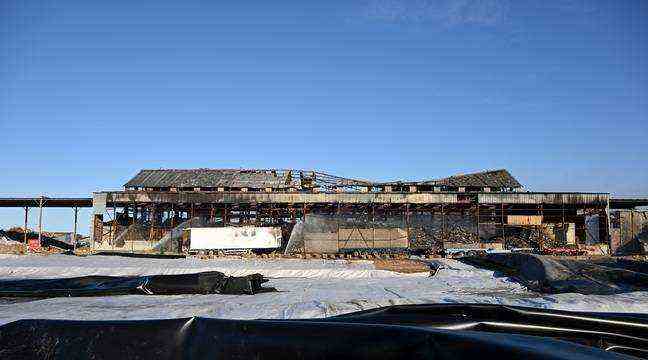Fire, hydrocarbon leak, flaring… From mild incidents to potentially dramatic accidents, the industrial activities concentrated around the Berre pond, west of Marseille, are not without risk. The latest (sad) example to date, the fire on December 26 at a waste sorting center in Saint-Chamas. This one, still in progress at the time of writing this article, has generated significant air pollution, comparable to the pollution peaks in a city like Beijing. Less serious, but just as recent, a hydrocarbon leak, which “is measured more in liters than in cubic meters”, indicated to 20 minutes industrial, arose from the Total refinery in La Mède. Events with incomparable respective consequences but which raise questions about the management of the latter’s risks.
The perimeter of the Etang de Berre is, with around forty classified installations,the second concentration* Seveso sites in France, after the Seine estuary, notes the Dreal (regional directorate for the environment, planning and housing). Under the orders of the prefecture, its agents carry out visits and thus control the security of these industrial sites. Contacted, the Bouches-du-Rhône prefecture was not able in four days to communicate the number of inspections carried out in 2021.
A “lack of transparency of the prefecture”, worries a resident
This does not mean, however, that the authorities do not act. Last September, shortly after a conviction of the steel plant giant ArcelorMittal for non-compliant pollutant emissions and yet another incident, the prefecture urged the industrialist to take “firm actions to put a definitive end to these incidents. repeated ”. Similarly, ten days before the disaster at the Saint-Chamas sorting center, it had issued an order, putting the operator on notice to return to a storage level of less than 1,000 m3 – there were then nearly 30,000 – before December 31.
Some examples of actions which do not convince the exposed inhabitants, however. Pascal Teracher, an inhabitant of Saint-Chamas, believes that “the prefecture has not put in place what was necessary to prevent the fire”. He is surprised “by the authorizations issued without effective supervision”, and worried about a possible “lack of transparency of the prefecture”. “There may very well have been hazardous waste stored,” he said. This is why, with an engineer friend who designed sensors, he decided to carry out his own measurements.
1,488 reports to Atmosud in 2021
Examining pollution in the air is what Atmosud does. “We carry out surveillance with the citizens”, explains Dominique Robin, its director. With the FNE (France nature environment), they quickly deployed a few sensors in the area. So much for the actions once the incidents have occurred. But on a daily basis, it relies on a network of fifteen stations spread around the Etang de Berre and above all on citizen surveillance which can report events. using an app. “In 2021, we received 1,488 reports in the Bouches-du-Rhône,” explains Dominique Robin. “It may be an unusual smell, an unusual color of smoke, tingling, irritation …” He is rather serene about the revelation of the incidents. “Today, with social networks, information circulates very quickly. Manufacturers no longer have much choice and we cannot put them all in the same bag ”.
To reassure residents and establish a link with industry and authorities, the SPPPI (Permanent Secretariat for the Prevention of Industrial Pollution) around the Berre pond set up in 2019, the “Responses” device (reduce environmental health pollution), a unique action in France. “It is about responding to the concerns, needs and expectations of residents. For this, a vast consultation was launched in 21 municipalities ”, indicates Gwenaëlle Hourdin, its general delegate. An initiative which set out “120 expectations, resulting in 137 responses”, specifies Gwenaëlle Hourdin. This is how the SPPPI was able to identify various programs as “responses”, ranging from a reinforced food control plan, to deployment in the Gulf of Fos-sur-Mer area, to the deployment of a hydrogen sector via promoting cycling.
* Seveso: With a high threshold or a low threshold, this nomenclature makes it possible to identify industrial sites presenting a risk of major accidents.

